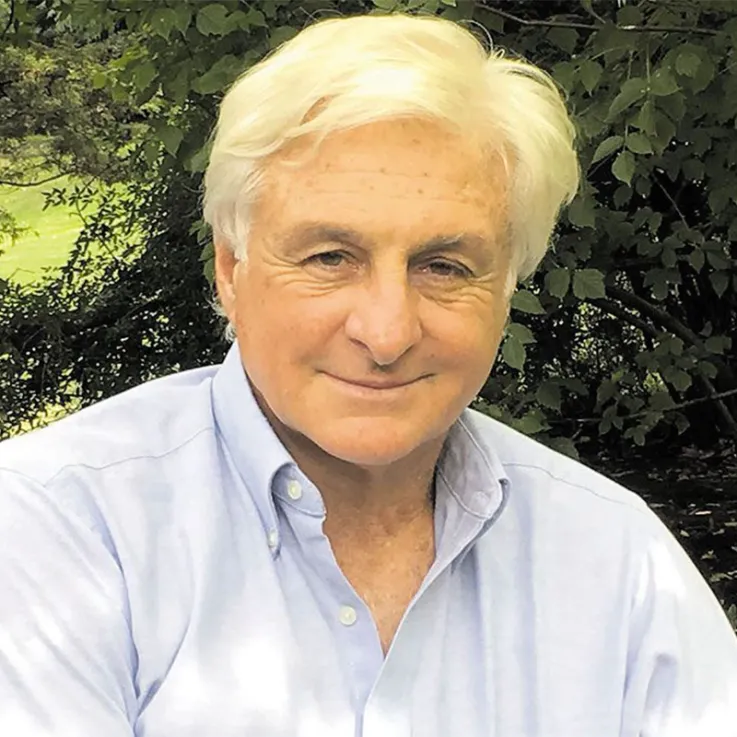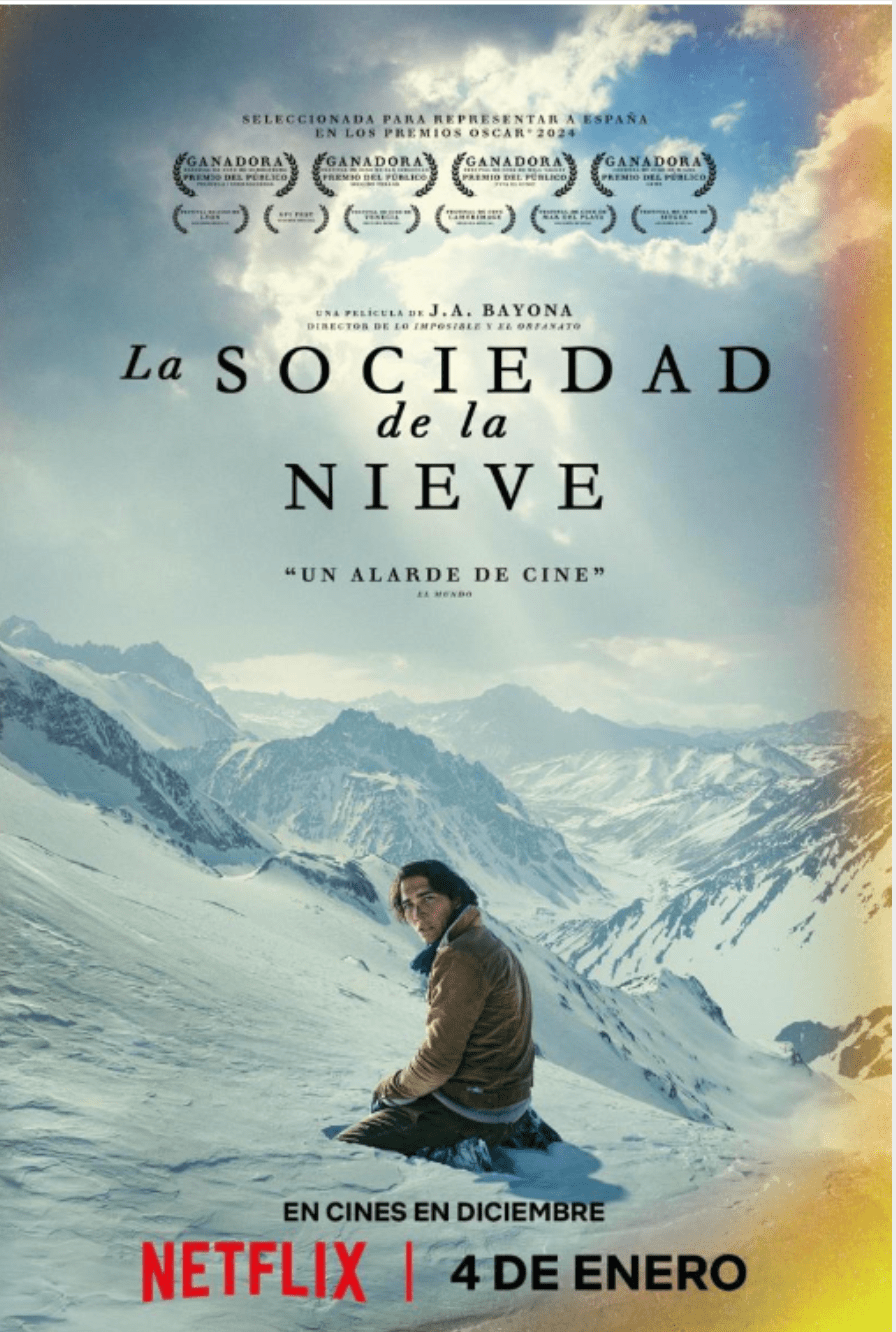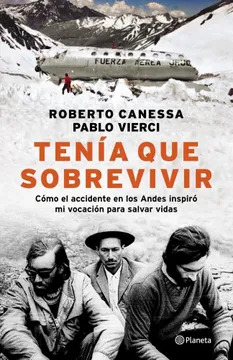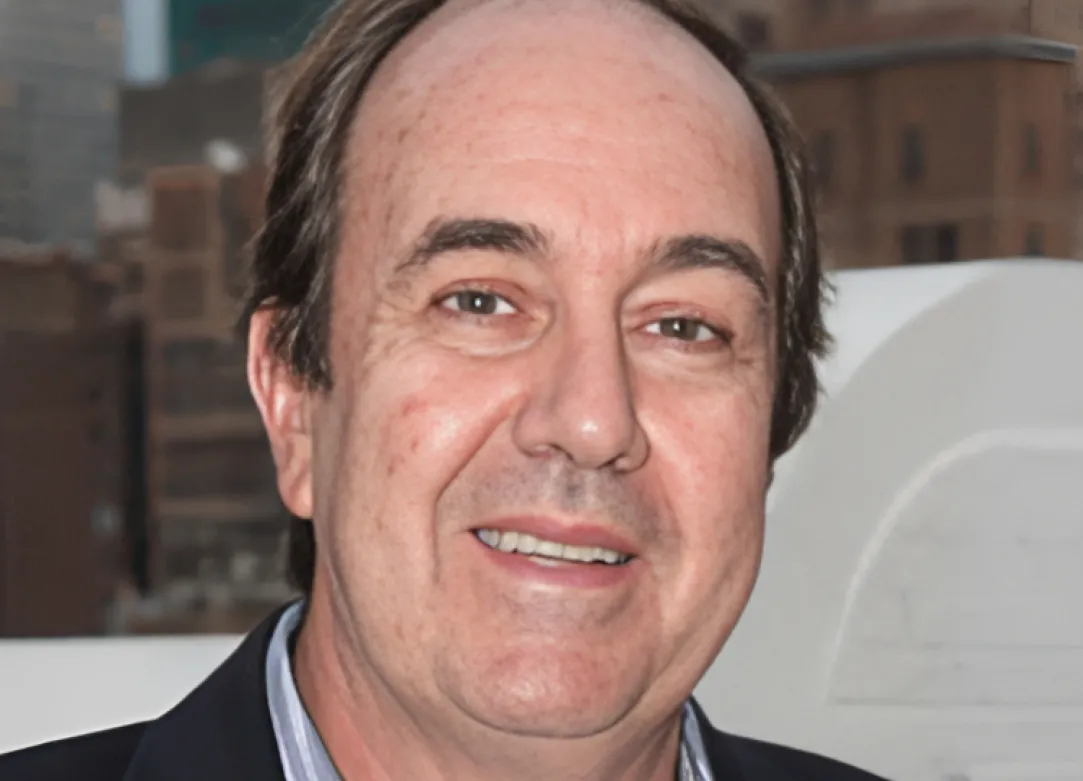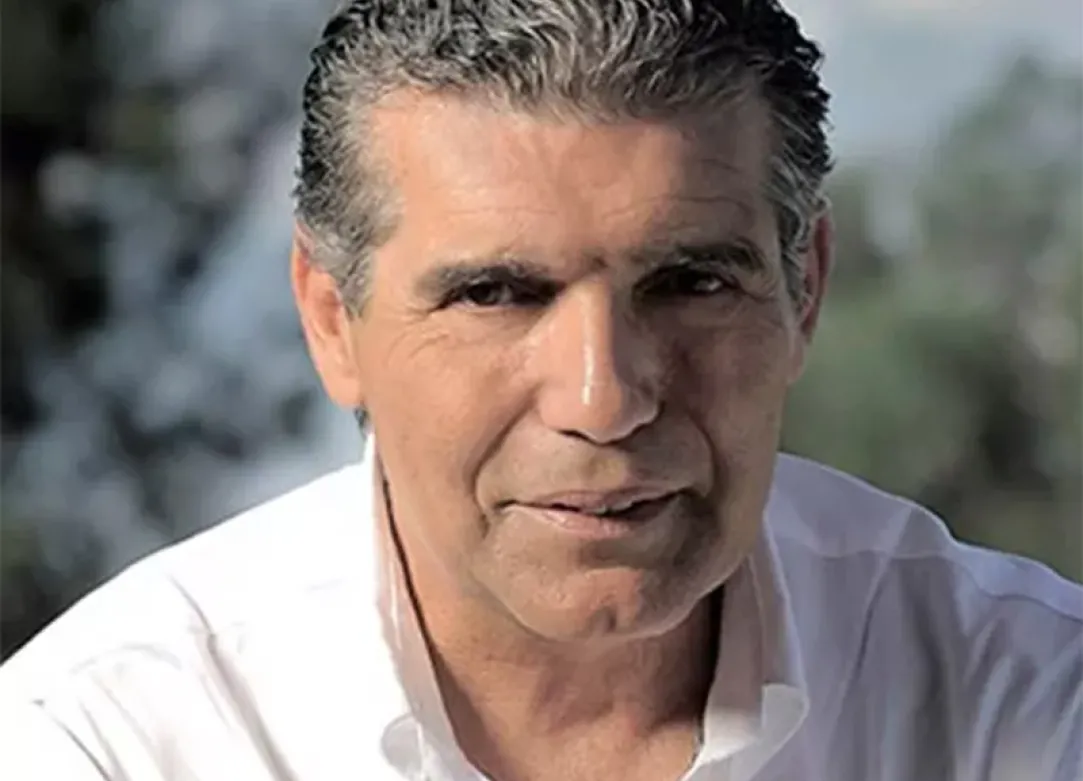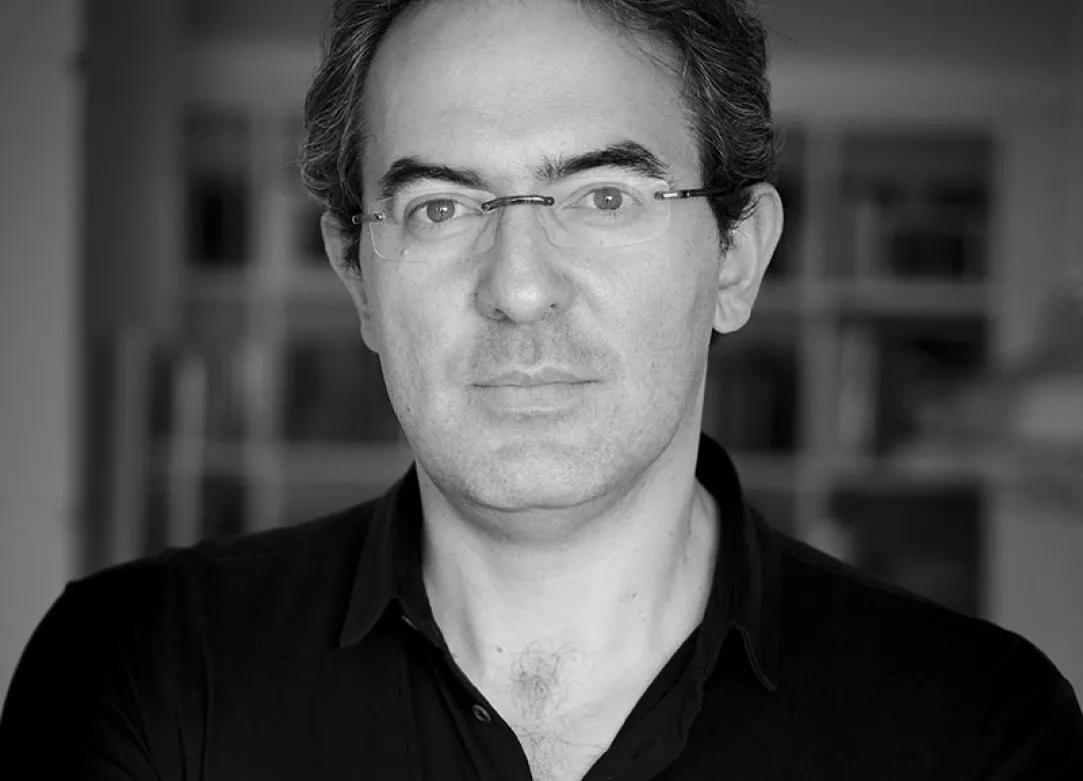"I had to survive the accident at 19 so as to assist other kids facing their own "high mountain" to enable them to also have a chance".
"One of the unforgettable scenes in the mountain happened on the first day of the last footslog to cross the Andes mountain range, a 10-day climb, having lost 30 kilos, no equipment, geared with nothing whatsoever.”
On 13 October 1972, when he was just 19 years old and was a second-year Medical School student in Uruguay, he was able to escape he tragedy unscathed. This made him very active and determined in carrying out activities to escape that trap. First, in his role as a doctor, taking care of those that were wounded. Then, as an organiser, creating hammocks for those that had been hurt and collaborating with the idea of taking the bodies of those that were dead as a source of food and buy time. Last and the hardest task, take on the role of expeditionist, after Arturo Nogueira, one of his mates, who ended up dying in the avalache, told him: "how lucky you are Roberto, you are able to walk for the rest of us". And that`s what he did in the Andes and throughout his whole life.
Roberto puts it this way, himself:
"One of the unforgettable scenes in the mountain happened on the first day of the last footslog to cross the Andes mountain range, a 10-day climb, having lost 30 kilos, no equipment, geared with nothing whatsoever. It was that first night, when we were about to freeze, unable to find a place to put our sleeping bag made of plane rags that were sown together, that we found a rock that would allow us to place it without falling off to the abyss. As soon as we put it down, the wind calmed down and a huge moon came up, right there; so close that you could touch it; which led me to feel that it was there to tell me that it allowed me to stay alive that night. Whenever overwhelmed by my patients` issues, I walk out on those nights to search for the moon, and it`s that same moon that I saw in December 1972 that comes around to tell me not to give up but to persevere, and that the inevitable ending of the story can be changed”.
Even though he never had a cast of doubt about studying Medicine and Cardiology, his father`s career and speciality, that vocation strengthened in the Andes, which led him along the pediatric cardiology path, especially devoted to treating children with congenital cardiopathies. "Over treating adults or the elderly who suffer from other diseases, I prefer the most challenging group, the most vulnerable, children that came out "the assembly line" somehow faulty, those who had no chances whatsoever not long ago", Roberto says.
Roberto adds:
"The Andes` halo, the fact that it is a worldwide well-known event, opened doors to the most prestigious medical centers and doctors of the world, and we have put together a network that enables me to have my patients not only being checked myself, but their ecographies being reviewed in grand rounds all around the world. That is to say, in order to truly fulfil the commitment I made to my friends who died in ´72, I could broaden it to reach a network that is made of doctors coming from every corner of the world, to stretch my patients' limits, enable them to widen their horizons, as it happened to me in \`72".
ne cannot deeply understand who Roberto is without getting to know the bond with his family, his relationship with his wife and his children. It all started in his family: he knew his father was looking for him while he was in the Andres, as it actually did happen, because "if he had got lost, I would have left no single stone unturned", as he states.
Regarding his mom, Roberto narrates: "Three years before the accident in 72, in May 69 to be more precise, 3 school mates drowned on their way to the Flores Island while sailing on a canoe, in Montevideo. My mother had said back then that she wouldn`t survive if a son of hers died. And that was a very powerful reason for me not to falter in the Andes at any point, to give it all to get back to her”.
His wife, Lauri, recalls the moment she reunited with Roberto at the San Fernando Hospital:
“I got into his room very slowly and when I saw him; laying down on his bed, wrapped on a white hospital gown, his black long and scraggly beard, with such a scrawny face; I found it hard to recognize him. Roberto made a hand gesture so as for me to approach him, and I wanted tojump on him, as I figured any 19-year old girlfriend would do on her charming prince coming back from the darkness. However, what I found around my arms was not what I expected: the kight in shining armour was a skinny skeleton, his lips were cracked to a point that I was even unable to kiss him. So, he stretched his arm, grabbed an envelope from his night table, which he kept as if it were the most precious gift one could imagine. When I opened it, I couldn`t hide my surprise as I found a tiny piece of yellowish and dirty cheese that he had got from the mule drivers at the Maitenes. "I walked for you, Lauri", he muttered.
His son Tino defines him as follows:
“Everything I learned from my father was not something he told me, but that he did. I saw an attitude that I haven`t seen in any religious people, missionaries, doctors nor politicians, because it`s a silent and very humble one. It involves respecting everyone without making any differences, all across society, where we are all similar but doing different things. And the second thing I have always seen, is that he never gives up. Never."
His son Tino defines him as follows:
"By looking at the final expedition that my father did in the Andes, I can see his distinctive traits come out. The main one is that that footslog only worked under a positive mind. The constant hardships that he suffered in the Andes would make other people afraid of these repeating, would ready them for fateful chances. This worked in reverse on him. I don`t know how, but he confirmed that negative things are remotely random. He embodies the extreme example of a pessimistic scenario, but that is exactly what catapults him to the other state, resulting in a virtuous circle that he spreads himself"
Lala, his daughter, defines him, as follows:
"I believe that the main motivator to walk for dad was that his mother wouldn`t have to live a life having a dead son. He had to be reborn for her, she always knew he was alive, but he didn`t know that. And that`s why he has lived his life in the border, not the one between life and death, but of birth and rebirth, dealing with children that are about to be born but may not do it. Being around desperate mothers that need his support, which is the same one his own mother required. His mom needed a definite evidence that she was right, and the only one possible was that her son came back alive. That he returned with such grand message. What he does now, is exactly the same he experienced with his mother: he`s the messenger of other children telling their mothers that it was worth waiting for them".
Roberto`s life catapulted with the experience in the Andes, which also marked his entire life after it, being 40 years devoted to Pediatric Cardiologyfor new borns and fetuses suffering from congenital cardiopathies which is one of the most sensitive fields of Medicine. Roberto has been able to find and explain connections; many times intangible ones between extreme adversity, as the 70 days in the Andes were when he was just 19 years of age; and what he devoted his life to after that, by trying to save the lives of more than 100 thousand children, his patients throughout his existence.There`s a titanium and crystal thread that links that past he can`t change, and this present that is alive and changing every day, filled with new patients and challenges, in a fast-paced changing discipline such as Pediatric Cardiology. His son, Tino, who is also a doctor, says that his father is "addicted to life".
Roberto explains it:
“I feel that getting out of the Andes meant kind of an extra responsibility, since I didn`t do it only for me, but thanks to those 29 friends that died and that enabled us to stay alive. So, I am not only myself but also myself on behalf of others; therefore, my life can`t be led in an ordinary way. If I did so, they would question me and tell me: "Roberto: what have you done with the life we contributed to keep?" This is something that is complex, but it doesn`t operate as a trauma that turns me off, but as a booster that makes me more hard-working and to make a greater effort to contribute, together with many others, to save my patients` lives".
Practising sports is a virtuous way that Robert has found to channel that energy that has brimmed since his childhood. It is so, due to being healthy on a physical level, thanks to the sports' own nature, in his case, with the aded value that it makes him more alert and perfectly ready to perform his other vocations or drives. Therefore, sports complement him and are inseparable from him exuberant personality. Rugby is the one that he has practised more often since he was a teenager, it matches his personality because it requires passion and discipline, strength and temperance, energy and control. That`s why he got the national record of tries scored by a single player; was invited to represent Uruguay in the XV South-American Rugby team that participated in the South African Tournament in 1978.
Some career highlights:
1971-1981: first division player at Old Christians Club. National record of tries scored by a single player. Twice Vice Champion at the Rugby South American Tournament. Invited to represent Uruguay to be part of the XV South-American team that participated in the South African tournament in 1978.
